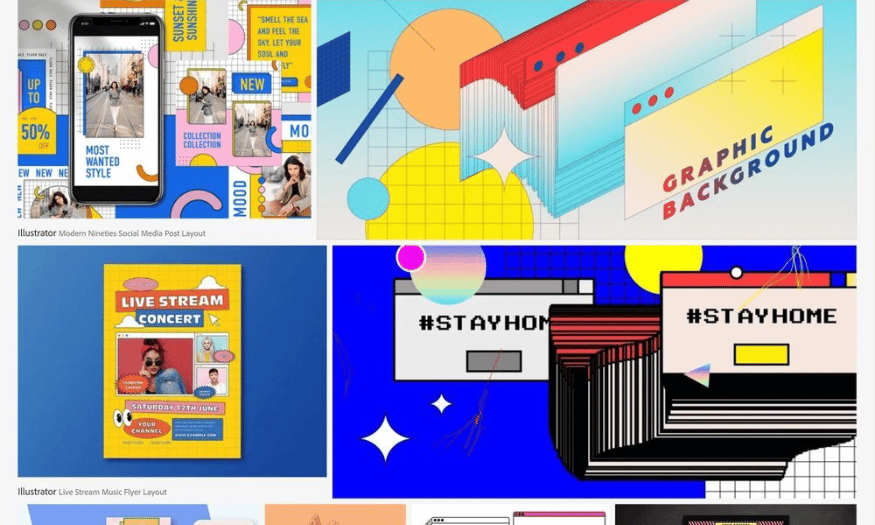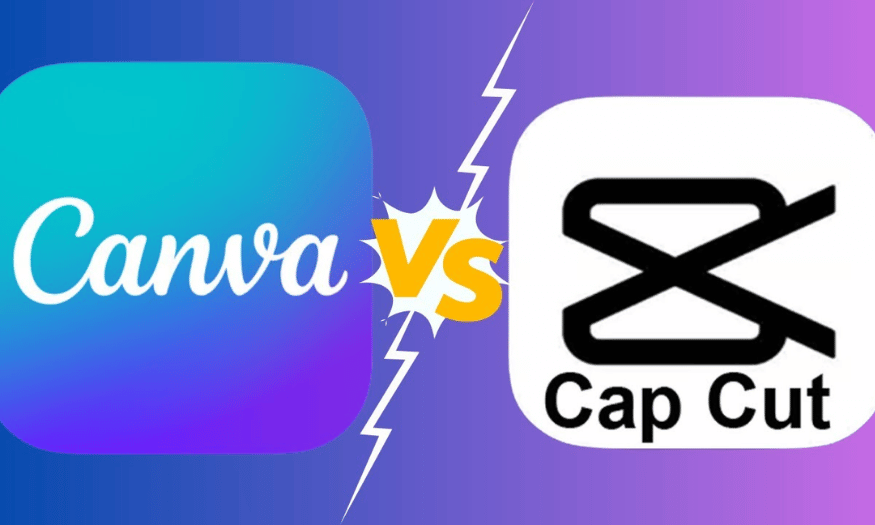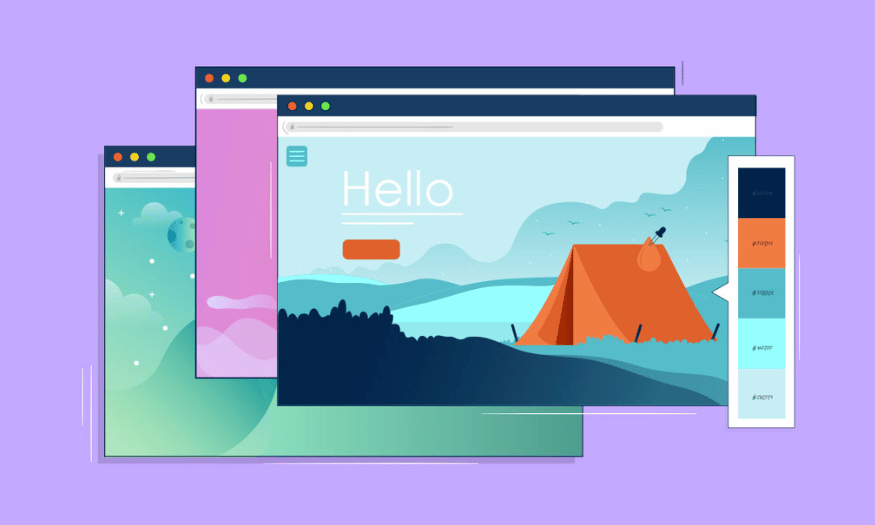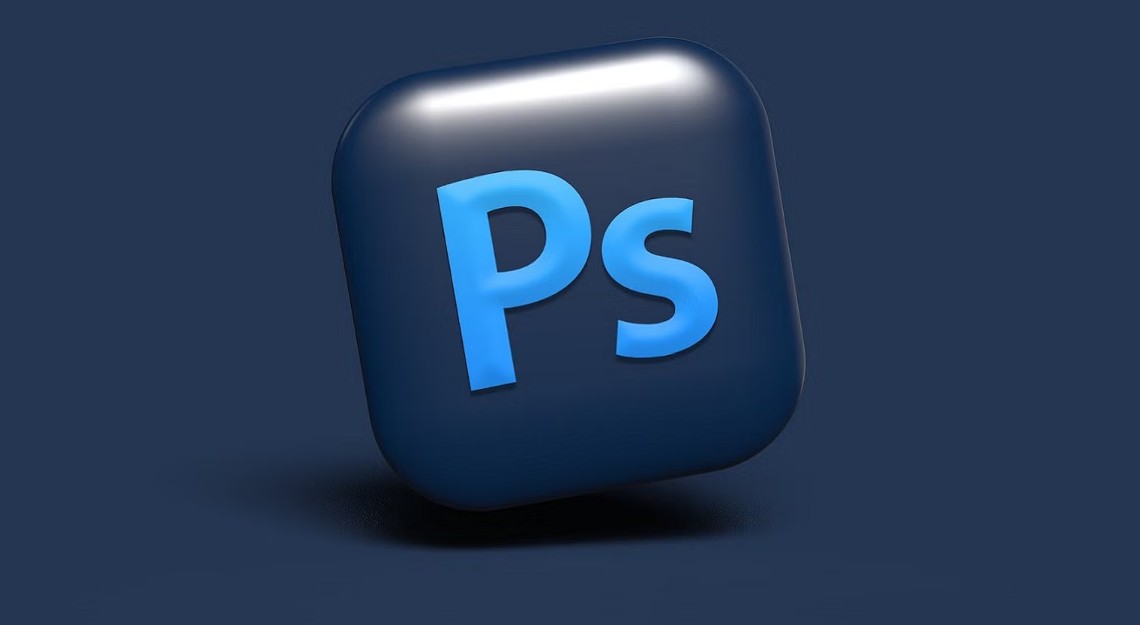Best Selling Products
Visually Appealing Design Trends Graphic Designers Need to Know
Nội dung
In the modern world of graphic design, it is essential for graphic designers to keep up with visually appealing design trends to create unique and impressive products. These trends not only reflect changes in consumer preferences but also the development of technology and design tools. From bright colors to minimalist designs, each trend brings a fresh and creative look, helping designers express themselves and attract customers' attention. In this article, Sadesign will explore with you the most prominent design trends that graphic designers need to know so as not to be left behind in this competitive industry.

In the modern world of graphic design, it is essential for graphic designers to keep up with visually appealing design trends to create unique and impressive products. These trends not only reflect changes in consumer preferences but also the development of technology and design tools. From bright colors to minimalist designs, each trend brings a fresh and creative look, helping designers express themselves and attract customers' attention. In this article, Sadesign will explore with you the most prominent design trends that graphic designers need to know so as not to be left behind in this competitive industry.
1. Hand-Drawn Illustrations
In a market where authenticity is increasingly valued, hand-drawn illustrations are a strong trend. According to a Stackla survey, 88% of consumers believe authenticity is a decisive factor in choosing and liking a brand. Applying this design style not only brings closeness and friendliness but also allows brands to express their own identity. Publications created by the hands of artists will create a unique and unrepeatable feeling, thereby attracting the attention of customers.
The authenticity in each stroke not only shows meticulousness but also creates a strong emotional connection with consumers. Handcrafted designs often bring a sense of warmth and closeness, helping brands stand out in a sea of cold digital images. In this way, graphic designers can create works of art that are not only beautiful but also contain a deep message about the values that the brand wants to convey.
.png)
2. Surrealism
Surrealism always brings unique and surprising experiences to viewers. This is an art school that allows designers to freely explore their inner world, creating colorful but also mysterious images. With a skillful combination of reality and imagination, surrealist designs not only attract the eyes but also arouse the curiosity and desire to explore of viewers.
The boundless creativity of surrealism is often expressed through bizarre images where logic and reason are no longer the dominant factors. This allows graphic designers to visually express deep and complex messages. Shutterstock has stated that surreal images can be eccentric or energetic, depending on how designers exploit and communicate the message.
One of the notable designers in this field is Nico Ito. She creates work that is not only distinctive but also very personal. Her designs, such as her illustrations of Nike shoes and Gucci handbags, uniquely represent the combination of art and branding. With her unique surreal style, she has not only captured the attention of consumers but also established herself in the graphic design industry.
3. Minimalism
Minimalism has become a popular design trend in many fields, from art to interior design and technology. With the philosophy of "Less is More", this style emphasizes the removal of unnecessary details to retain only essential elements, helping to convey messages clearly and effectively. Minimalism not only brings luxury but also creates a relaxing, pleasant feeling for the viewer.
Using minimalism in design allows brands to focus on the core elements they want to convey. Using clean lines and minimal colors, graphic designers can create publications that are appealing at first glance. This is especially important in a world where consumers are often overwhelmed by information and images.
.png)
4. Maximalism
While Minimalism often aims for simplicity and sophistication, Maximalism is a bold revolution in design, awakening all the senses of the viewer with richness and diversity. This style stands out with a strong combination of colors, graphics and patterns, creating works full of energy and space. A product designed according to the Maximalism trend often shows complexity with many layers, making every angle bring a different experience. Empty space is almost non-existent, which makes the work more vivid and attractive.
However, with its complexity and sophistication, Maximalism also faces many difficulties in reaching viewers. These designs often require viewers to have patience and the ability to appreciate art, which can make them "picky" for viewers. Sometimes, these works can be judged aesthetically wrong, leading to mixed opinions from the audience. However, this uniqueness and innovation is the factor that attracts those who love the difference, especially the young.
Generation Z, with its strong personalities and desire to stand out, is often attracted to designs that are personal and creative. Many surveys have shown that this group's consumer behavior is strongly influenced by personal preferences and uniqueness. Maximalism, with its sophisticated and eye-catching designs, is the key to helping brands connect with young customers, creating memorable and impressive experiences. For example, the Swedish brand Happy Socks has succeeded in creating diverse collections, collaborating with many famous names, bringing customers products that are both quality and colorful.
5. Data Visualization
In the digital age, where information is overwhelming and consumers only have about 8 seconds to concentrate, Data Visualization has become an essential tool for brands to convey their messages effectively. The human brain is capable of processing images 60,000 times faster than text, which shows that presenting data through images is not only accessible but also attractive to viewers. Intuitive charts, creative illustrations and unique design styles will help brands stand out in a fiercely competitive market.
Instead of just providing dry data, brands need to know how to turn them into compelling stories that help consumers easily understand and feel the message. By presenting information visually, brands not only attract attention but also create emotional connections with customers. This is more important than ever when the market is increasingly crowded with brands, each brand is eager to make the best impression on consumers.
6. Candy-Colored Pastels
Pastel colors, with their gentle and sweet beauty, have become a popular design trend in many fields, from fashion to interior design. Pastel colors are often divided into two main groups: cool colors such as light pink, mint green and warm colors such as bright yellow, peach. These colors not only create a youthful, fresh feeling but also bring optimism to the viewer. In the past, pastel colors were often used only in the fashion and interior design fields, but now, they have become a popular choice for many diverse brands.
As society increasingly prioritizes relaxation and comfort in everyday life, soft pastel colors are more ideal than ever. Not only do they help reduce stress, but they also create a warm and cozy atmosphere. There is a growing demand for products that are pleasant and psychologically friendly to consumers, making these colors a top choice for brands looking to project a positive image.
Using pastel colors in design not only helps brands attract customers but also creates a unique, recognizable style. Many brands have successfully combined pastel colors with other design elements to create unique and attention-grabbing products. With this trend, graphic designers have the opportunity to experiment with creativity and express brand identity more clearly than ever.
.png)
7. Natural Patterns And Textures
In the context of increasing environmental threats, nature has become a top concern for global consumers. According to a survey by IBM, 57% of respondents said they are willing to change their shopping habits to reduce their environmental impact. In addition, a report from HubSpot shows that 82% of consumers, especially Gen Z, expect brands to practice sustainable practices and value human safety. This shows that as environmental awareness increases, consumers are increasingly appreciating brands that use nature in their communications.
The trend of designing images inspired by nature is gradually becoming a popular phenomenon. Patterns such as trees, flowers, wood textures and animal images not only bring a sense of freshness but also help create a deep connection between people and the environment. These designs are often widely applied in the fields of fashion, cosmetics and interior design, where naturalness and sustainability are the top criteria. A typical example is the vegan cosmetics brand Cocoon, which stands out with products made from natural ingredients, clearly demonstrating its commitment to protecting the environment and consumer health.
As consumers increasingly prioritize sustainability, graphic designers are looking for ways to highlight natural elements in their designs. The variety of natural motifs not only adds variety to the product but also reflects the brand’s sense of social responsibility. The combination of visual elements and environmental messages will be a strong trend in the near future, as brands strive to make a mark in the hearts of consumers with sincerity and closeness.
8. Diversity And Inclusion
The development of technology has opened up countless opportunities for consumers to access diverse cultures around the world. The desire to explore and integrate has fueled creativity, leading to unique combinations in all fields from fashion to design. In particular, African culture has become a rich source of inspiration for designers, with its richness in materials, patterns and colors. These elements not only enrich design works but also create strong impressions on viewers.
Ramon Tejada, Assistant Professor at the Rhode Island School of Design, emphasized that the future of design must make room for voices and ideas that have traditionally been overlooked. This is especially important when celebrating diversity in race, gender, and age. Unilever has been a pioneer in this trend in its design, showcasing racial and cultural diversity in its products and advertising campaigns. Not only does it create a positive image, but it also contributes to creating a more welcoming and inclusive environment for everyone.
Diversity and inclusion are not just a trend, they are a necessity in today’s world. Brands need to demonstrate their commitment to diversity through their products, services and communications. This not only enhances their brand value but also creates a more engaged and loyal consumer community, one where every individual feels respected and valued.
9. 3D Design Elements
3D design is no longer a novelty for modern users, but in the coming years, this trend is expected to grow stronger than ever. According to a report from Exploding Topics, the use of 3D images is expected to grow by 20% per year from 2020 to 2026. This increase is mainly due to technological advances, making designing complex 3D images easier and faster than ever. Tools like Cinema 4D and Adobe's Substance toolset have become powerful assistants for designers, allowing them to create high-quality products in less time.
The 3D design trend not only brings products to life, but also creates interesting interactive experiences for consumers. 3D images help brands present products in a more realistic and detailed way, thereby attracting attention and enhancing memorability in the minds of consumers. The combination of 3D design and virtual reality (VR) or augmented reality (AR) technology promises to open up many new opportunities for graphic designers in creating unique and engaging experiences.
The 3D character design trend is booming, especially in China, where 3D images have become an integral part of consumer culture. 3D cartoon characters are not only cute images but also become icons for brands, helping to create a strong emotional connection with consumers. With the development of technology and the increasing demand for creativity, 3D design will certainly continue to assert its position in the graphic design industry.
.png)
11. Conclusion
In short, keeping up with visual design trends not only helps graphic designers create quality products but also helps them assert their position in the industry. Design trends are constantly changing, and it is important for designers to stay updated and flexible in their approach. By adopting the latest trends, they not only improve their skills but also bring value to their clients. Always be creative and dare to experiment, because that is the key to success in the field of graphic design.












































